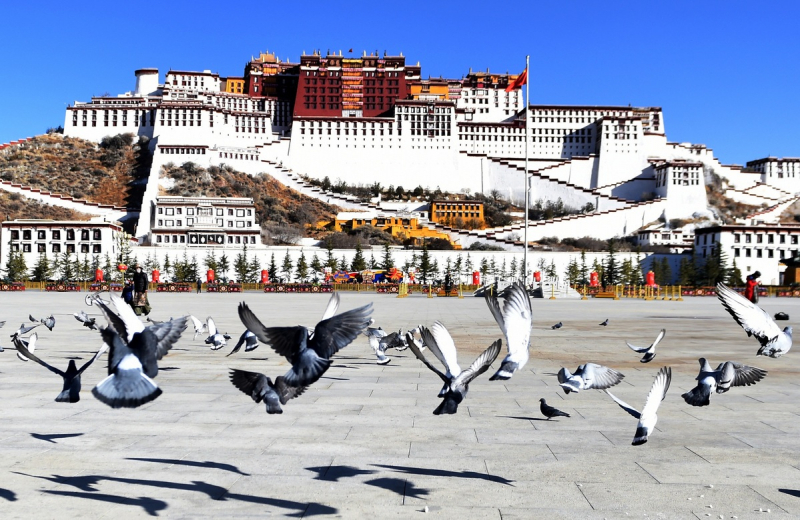The Potala Palace
In Lhasa, Tibet, the Potala Palace is a dzong castle. From 1649 to 1959, it was the Dalai Lamas' winter residence; since then, it has been a museum, and since 1994, it has been a UNESCO World Heritage Site. Mount Potalaka, the mythological dwelling of the bodhisattva Avalokitesvara, is the inspiration for the palace. After one of his spiritual counselors, Konchog Chophel (died 1646), pointed out that the site was appropriate as a seat of administration, the 5th Dalai Lama began building in 1645. The Potala Palace, one of the most beautiful historical sites in China, is located between the Drepung and Sera monasteries and the ancient city of Lhasa. It may be erected on top of the ruins of Songtsen Gampo's previous castle, the White or Red Palace, which was built in 637.
The structure is 400 meters east-west and 350 meters north-south, with sloping stone walls approximately 3 meters thick at the base and copper poured into the foundations to help it withstand earthquakes. On top of Marpo Ri, the "Red Hill," thirteen floors of houses with over 1,000 rooms, 10,000 shrines, and nearly 200,000 sculptures tower 117 meters above the valley floor, rising more than 300 meters in all.








